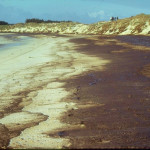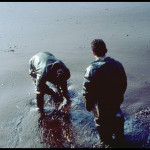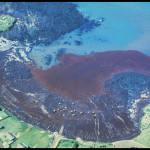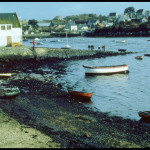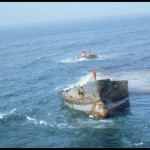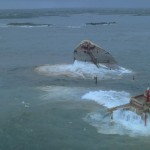Amoco Cadiz

On March 16, 1978, the VLCC tanker Amoco Cadiz ran aground on Portsail Rocks off the coast of Brittany, France. The tanker had departed from the Persian Gulf and was en route to Rotterdam, Netherlands with one schedule stop at Lyme Bay, England with a cargo of 1.6 millon barrels of light crude oil worth over 40 milllon (USD).

When the Amoco Cadiz entered the English Channel on March 16, sea conditions were bad. The vessel was sailing through a strong gale with winds reaching force 10 and heavy seas. Around 9:45 am, the vessel was struck by a large wave and the tanker’s rudder failed to respond. The crew found the steering gear had been damage allowing the hydraulic fluid to leak out. The crew attempted to repair the rudder, but the damage was too severe. The Cadiz notified other vessels to standby and later requested a tug.

By 11:30 am, the tug Pacific responded and arrived on the scene an hour later. Because of the heavy seas, it took several hours for the Pacific to pass a towline over to the disabled Cadiz. By 2 pm, the towline had connected, but the towline snapped a few hours later. Several more attempts were made to connect a towline and a towline was reconnected at just before 9 pm. However, the strong winds had pushed the VLCC tanker closer towards shore.

Within 10 minutes after the towline was connected, the tanker had ran onto the rocks. The Cadiz’s hull ripped open near the stern resulting in the flooding of the engine room. The vessel ran aground a second time a short time later. This time the cargo tank was torn open and oil spilled into the ocean. The captain of the Cadiz requested nearly all the crew except himself and one other officer be taken off the vessel. The French Navy dispatched helicopters and airlifted the crew to safety. By 5 am the next day, the captain and the officer were also removed off the tanker.

Around 10 am, the Amoco Cadiz broke-in-two and the cargo of 1.6 million barrels of light crude spilled into the ocean. Over the following days, stormy conditions continued and the vessel continued to break up into a total loss. The French Navy later laid depth charges on the wreck and destroyed the wreckage.
The resulting oil spill from the Amoco Cadiz was the largest to that date. Some 219,797 tons of light crude with the addition of another 4,000 tons of fuel oil were released into the surrounding water. A 12 mile slick formed and washed ashore onto 45 mile stretch of the French shoreline. More than 20,000 birds perished and the local marine life wad deeply impacted. Reports stated that several sheltered areas still contain oil in the sub-surface. Government efforts were only able to recover some 20,000 tons of oil.

The French government presented several claims and damages to United States courts. In 1990, some 120 million (USD) was paid by the American oil company Amoco to France.



